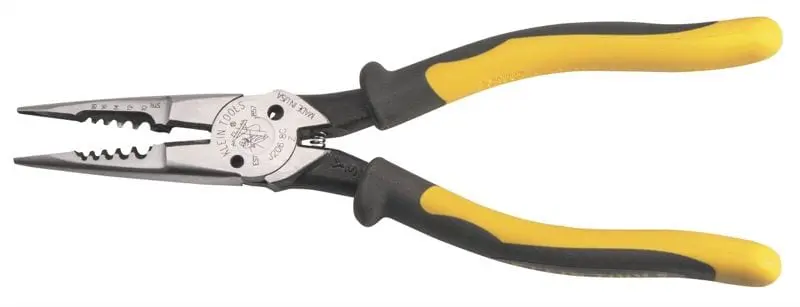
Socket Won’t Grab that Bolt? Bite it With Vampliers
Every once in a while someone sends us a tool that is tagged with a claim that’s a bit hard […]
Having spent countless hours testing various types of pliers and plier sets, we really have an appreciation for these particular hand tools. Nearly everyone has used slip joint pliers, however some offer a much better grip and opening than others. Tongue-and-groove (or waterpump) pliers (Channellocks) tend to find their way into most plumbers’ tool bags. We also rounded up our favorite locking pliers (Vise Grips) and linesman’s pliers which might equally share our most-used designation around the shop. Testing cutting pliers lets us see which of these tools offers the highest cutting capacity, strength, and ergonomics. Of the more common pliers we use, wire cutters and needle nose pliers might top the list. Our reviews take a very hands-on approach to looking at these products and discerning the top performers from the run-of-the-mill copycats. You only want to buy one set of hand tools. We want to help you make the right choices.

Every once in a while someone sends us a tool that is tagged with a claim that’s a bit hard […]

When Klein offered to send me their new All Purpose Pliers (model J2068C), it took me on a trip down […]

Harly was on a top secret mission. He was to seek and destroy the cat’s evil lair. This was no […]

GearWrench, long known for its innovative hand tool design and application in the auto industry, has a pair of new […]

I think every tool company feels the need to make at least one tool with an “X” in the model […]

Channellock’s brand new Code Blue Tongue & Groove Pliers (430CB) are rugged, durable, and possible most important of all – familiar. These aren’t new tools so much as old tools made even better. And that’s what you want in a good hand tool. People aren’t quite so interested in a whole new way to use a tool, disrupting the comfortable feel they’ve developed over decades of use – they just want something that feels right and lasts a long time. Channellock seems to have delivered just that with its Code Blue line of Pliers.

Channellock pliers have been a staple of many tool bags for years. Their signature blue “dipped” handles are easily recognized and have served the trades well for decades. This year, Channellock released a new line of tools it’s calling “Code Blue” which, ironically is one of the hospital terms for someone in cardiopulmonary arrest. I don’t think anyone will have a heart attack over these tools, but the new heavy duty Long Nose Pliers (318CB) may be just the thing if you’re looking for a new pair of rugged pliers.

Craftsman has put out a new line of Lighted Pliers which feature an LED light that shines directly on the […]

As an electrician, diagonal pliers are definitely a tool I use a lot in the field. This is especially true with commercial work where you have to cut a lot of cable and wire. Milwaukee’s Diagonal Pliers (48-22-4106) made a clean cut every single time I went to use them. This week we’re working on a remodel job on a commercial building built in the 1930’s. While some walls have been torn down and rebuilt, there are still some that are the original concrete block. On these I have had to put conduit and electrical boxes. Normally, this would be easy, but the wall was literally riddled with nails and screws. I found that these pliers were able to cut through the nails and screws with little to no difficulty. It sort of became my go-to tool for getting through the nitty gritty of clearing my area.

Tongue and groove pliers are one of the many tools that are used by commercial electricians, especially when working with conduit. One of the main reasons is because of the compression couplings that are used to put conduit together, but also, they just plain come in handy. I would definitely recommend buying two of these if you work on putting up conduit. You will get your money’s worth if you find yourself frequently using compression couplings. I really like that Milwaukee angled the head of the tool at 45 degrees and not 80-90 degrees. It makes it easier to tighten the couplings in hard to reach places. Plus, the smooth transition grips are especially nice because it feels like the tool is a part of your hand. The grips also don’t feel as if they’re likely to slip, even when you’re applying significant pressure to the tool.